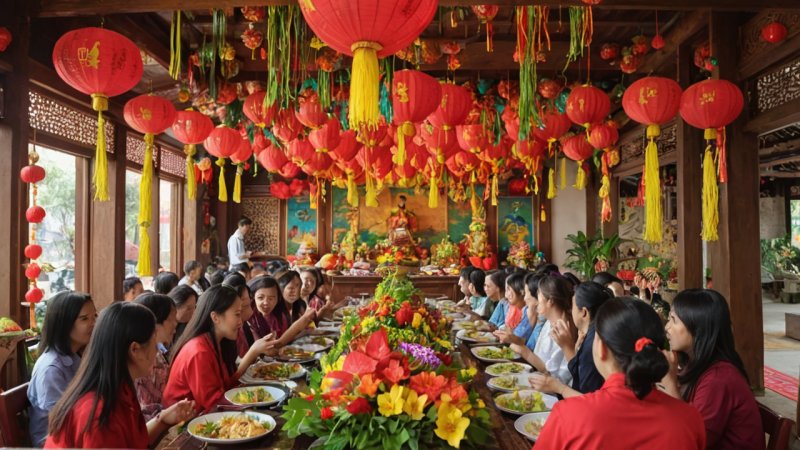Tết Nguyên Đán, or the Lunar New Year, is the most significant celebration in Vietnam, marking the arrival of spring and the beginning of the new year. This festive season is characterized by vibrant customs, family gatherings, and delicious food. However, in recent years, the way Tết is celebrated has evolved, creating a distinct contrast between traditional and modern observances. This article aims to explore the differences, pros, and cons of these two approaches to Tết, providing insights into how this beloved holiday is experienced across generations.
Traditional Tết Celebrations
Traditional Tết celebrations are deeply rooted in Vietnamese culture and heritage. They often emphasize familial ties, respect for ancestors, and customs that have been passed down through generations.
Pros of Traditional Tết
- Preservation of Culture: Traditional Tết embodies the rich cultural heritage of Vietnam, allowing younger generations to connect with their roots.
- Family Bonding: The focus on family gatherings strengthens relationships and fosters a sense of belonging among relatives.
- Spiritual Significance: Paying respects to ancestors through rituals and offerings instills a sense of gratitude and reverence.
Cons of Traditional Tết
- Time-Consuming: Preparing for traditional Tết can be labor-intensive, involving extensive cleaning, cooking, and shopping.
- Generational Gap: Younger generations may feel disconnected from the rituals, leading to a decline in participation.
- Costly: The expenses associated with traditional preparations, such as food and decorations, can be burdensome for some families.
Modern Tết Celebrations
Modern Tết celebrations reflect the changes in lifestyle and societal values, often incorporating contemporary elements that appeal to a broader audience, especially the youth.
Pros of Modern Tết
- Convenience: Modern celebrations often prioritize convenience, with many families opting for pre-prepared meals and decorations.
- Inclusivity: The blending of traditional and modern elements makes the festival more appealing to a diverse range of people.
- Social Media Engagement: Modern Tết is heavily promoted on social media, allowing for a wider reach and engagement among younger audiences.
Cons of Modern Tết
- Loss of Tradition: The shift towards modernity can lead to the erosion of traditional customs and practices.
- Consumerism: The focus on trendy gifts and extravagant celebrations can overshadow the true essence of the holiday.
- Weakened Family Bonds: With modern celebrations often taking place in social settings, the intimate family gatherings may be sacrificed.
Key Differences Between Traditional and Modern Tết
Understanding the differences between traditional and modern Tết can help one appreciate the evolution of this festive occasion.
- Focus: Traditional Tết emphasizes family, rituals, and honoring ancestors, while modern Tết leans towards convenience, celebration, and social engagement.
- Preparation: Traditional preparations require significant time and effort, whereas modern celebrations often involve shortcuts and ready-made options.
- Community Involvement: Traditional Tết fosters close-knit family interactions, while modern Tết encourages broader social connections and community events.
Conclusion
Both traditional and modern Tết celebrations offer unique perspectives on this cherished holiday. Traditional Tết provides a profound connection to Vietnam's cultural heritage and familial bonds, while modern Tết embraces convenience and inclusivity, catering to the evolving lifestyles of contemporary society. Ultimately, the choice between these two celebrations depends on individual preferences and values. For those who cherish cultural traditions, preserving the essence of Tết through traditional observances is invaluable. Conversely, for younger generations seeking a balance between celebration and convenience, modern Tết offers a refreshing approach. Regardless of how one chooses to celebrate, the joy and spirit of Tết will always remain at the heart of this beloved Vietnamese festival.






